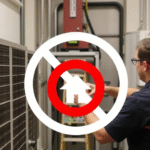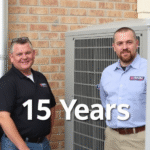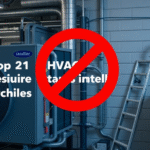Call for Presenters: Opportunities at the National HVACR Education Conference
Every year, the National HVACR (Heating, Ventilation, Air Conditioning, and Refrigeration) Education Conference becomes a significant event for professionals in the HVACR realm. This year, excitement is building as the announcement for presenters has been officially issued. This call for presenters is a golden opportunity for experts, educators, and practitioners to share their knowledge, innovative practices, and insights into the rapidly evolving HVACR industry.
For those considering participation, presenting at this conference can establish you as a thought leader in the field. It offers a platform to connect with peers, collaborate with industry leaders, and enhance the quality of HVACR education nationwide. The conference aims to address current industry challenges and share effective solutions. Here are key details about the call for presenters:
- Submission Deadline: Interested presenters should submit their proposals by the specified deadline to ensure consideration.
- Proposal Requirements: Each proposal should include a detailed outline of the session, including learning objectives, target audience, and any relevant experience the presenter brings.
- Session Format: The conference welcomes various formats such as workshops, panel discussions, and innovative presentations that encourage audience interaction.
What makes this conference unique is its focus on collaboration and empowerment within the HVACR community. Presenters will not only impart their expertise but will foster an engaging atmosphere where attendees can learn from each other through shared experiences and discussions. You’ll find sessions covering a wide array of topics, including:
- Emerging technologies in HVACR
- Sustainable practices and energy efficiency
- Workforce development and education strategies
- Best practices for HVACR servicing and maintenance
As a presenter, you’ll be making a valuable contribution to the future of the HVACR sector by enlightening attendees about the latest trends and challenges facing the industry. This collaborative approach can significantly impact how HVACR is taught across various educational platforms.
Additionally, the conference is looking for presentations that emphasize hands-on learning and real-world applications. If you have unique insights or strategies that have proven effective in your own practice, your proposal could be just what the planning committee is looking for. The focus is on actionable information that attendees can implement in their work right away.
| Topic Area | Details |
|---|---|
| Emerging Technologies | Highlight innovations disrupting the HVACR field. |
| Sustainability | Discuss energy-efficient practices and their impacts. |
| Workforce Development | Strategies to train and attract new talent in HVACR. |
| Best Practices | Share tips and methods that increase efficiency and effectiveness. |
To submit your proposal, visit the official National HVACR Education Conference website. Here, you can find more specific guidelines about the submission process, deadlines, and the criteria for proposals. Stay updated and learn more about previous winners and notable speakers that have graced the stage at past conferences. For more information, check out National HVACR Conference.
Joining as a presenter not only enhances your professional portfolio but also gives you the chance to make an impactful difference in HVACR education. This opportunity allows you to gain visibility and recognition while contributing to an essential conversation shaping the industry’s future. Don’t miss out on the chance to share your expertise and insights with an enthusiastic audience passionate about HVACR education!
Consider this your invitation to participate actively in a vibrant community dedicated to elevating HVACR education. Remember, your voice matters in this crucial dialogue, so prepare your proposals, gather your insights, and get ready to inspire others. Be part of this transformative event and help chart the future of HVACR education.
Innovative Teaching Methods in HVACR Education
In the ever-evolving world of HVACR education, innovative teaching methods play a pivotal role in preparing students for real-world challenges. These unique strategies not only make learning more engaging but also ensure that students grasp complex concepts effectively. Traditional teaching approaches are gradually being replaced or enhanced by cutting-edge techniques that cater to a diverse range of learning styles.
Hands-On Learning Opportunities
One of the most effective ways to teach HVACR concepts is through hands-on experience. Practical training allows students to apply theoretical knowledge in a controlled environment. This method includes:
- Lab Workshops: Students can work with actual HVACR systems, enabling them to understand the workings of different components.
- Simulated Environments: Virtual labs provide an immersive experience where students can troubleshoot issues without the risk of damaging real equipment.
- Job Shadowing: Partnering with local HVACR companies allows students to see professionals in action, providing valuable real-world insights.
Integration of Technology
Technology is reshaping education across various fields, and HVACR education is no exception. Implementing technology in classrooms enhances the learning experience significantly. Some key technological advancements include:
- Online Courses: Many institutions now offer courses online, allowing flexibility for students regardless of their geographical location.
- Augmented Reality (AR): AR applications can overlay technical information in real-world contexts, giving students a clearer understanding of HVACR systems.
- Mobile Applications: Apps geared towards HVACR can provide quick references, calculators, and troubleshooting guides right in students’ pockets.
Collaborative Learning
Fostering collaboration among students can enhance learning outcomes significantly. Group activities and projects promote teamwork and problem-solving skills, which are essential in the HVACR field. Here’s how collaboration can be effectively utilized:
- Group Projects: Assigning tasks that require teamwork encourages students to share ideas and learn from each other.
- Peer Teaching: Allowing students to explain concepts to their peers reinforces their understanding and builds confidence.
- Discussion Forums: Implementing online platforms for discussion promotes engagement beyond the classroom.
Flipped Classroom Models
The flipped classroom model is gaining popularity in today’s educational landscape. In this setup, students learn new content at home through videos or interactive modules and engage in practical exercises during class time. This method has several benefits:
- Increased Engagement: By having knowledge of the material beforehand, students come prepared to actively participate in discussions and hands-on activities.
- Personalized Learning: Students can learn at their own pace, revisiting complex topics as required.
- Maximized Classroom Time: Instructors can focus more on applying skills rather than delivering lectures, enhancing the quality of instruction.
Utilizing Industry Partnerships
Strong partnerships between educational institutions and HVACR industry players can greatly enrich the curriculum. These partnerships may involve:
- Internship Opportunities: Real-world experiences through internships can bridge the gap between education and employment.
- Guest Lectures: Professionals from the industry can share insights and trends, helping students to understand the market demands.
- Curriculum Development: Collaborating with industry experts ensures that the curriculum remains relevant and up-to-date.
Professional Development for Instructors
For teaching methods to remain innovative, continuous training and professional development for instructors are essential. Educational organizations should consider programs that:
- Provide Workshops: Regular workshops can introduce the latest teaching methodologies and technologies.
- Encourage Research: Engaging educators in research can lead to new insights and improved teaching practices.
- Promote Networking: Connecting educators with industry professionals allows for shared learning and resource exchange.
Utilizing these innovative teaching methods can revolutionize HVACR education, leading to better-prepared professionals ready to tackle industry challenges. With the ongoing evolution of technology and pedagogy, the future of HVACR education looks bright and promising. For more information on advancing HVACR educational methods, visit National HVACR and HVACR School.
Industry Trends Shaping the Future of HVACR
The HVACR industry is evolving rapidly, driven by new technologies, changing consumer demands, and environmental considerations. As professionals in the field, you need to stay updated on the latest trends that shape the future of heating, ventilation, air conditioning, and refrigeration. Here are some key trends to watch.
Energy Efficiency Changes
With a growing emphasis on sustainability, energy efficiency is more important than ever. HVACR systems are becoming increasingly efficient, which helps both the environment and your utility bills. Key advancements include:
- Variable Refrigerant Flow (VRF) systems that adjust output based on demand.
- Smart thermostats that optimize HVAC use according to occupancy.
- Advanced heat pump technologies that provide both heating and cooling more efficiently.
According to Energy Star, using energy-efficient products can save consumers an average of 30% on their energy bills.
Integration of Smart Technology
Smart technology is revolutionizing HVACR systems. From connected thermostats to smart pressure sensors, these tools are designed to improve control and efficiency. Benefits of smart technology integration include:
- Remote monitoring and control capabilities.
- Predictive maintenance that reduces downtime and repair costs.
- Data analytics that help businesses optimize performance.
As technology advances, integrating smart systems into HVACR products is becoming standard. Consumers increasingly prefer systems that can communicate and adapt to their needs.
The Push for Environmentally Friendly Refrigerants
Regulations are changing, and the push for low Global Warming Potential (GWP) refrigerants is at the forefront of HVACR innovation. These refrigerants reduce climate impact while still providing effective cooling. Key trends related to refrigerant use include:
- The phase-out of HFCs (Hydrofluorocarbons) in favor of natural refrigerants like CO2 and propane.
- Adoption of refrigerants that comply with the latest EPA regulations.
- Investment in research and development for new refrigerant options.
Strategies for the transition include proper training for HVACR technicians on the handling of new refrigerants, ensuring environmental and safety standards are met.
User-Centric Design
The focus on user experience is defining how products are designed and marketed. HVACR systems prioritize customer needs through features such as:
- Intuitive interfaces that simplify operation.
- Compact designs that save space while maintaining efficiency.
- Customizable solutions for unique building requirements.
Companies that actively seek feedback from users will likely succeed in creating systems that cater to market demands.
Regulatory Factors
Government regulations are continually evolving, impacting how HVACR systems are manufactured and installed. Compliance with these rules is essential, and key areas of focus include:
- Minimum efficiency standards that redefine product expectations.
- Building codes that encourage sustainability measures.
- Incentives for energy-saving installations and upgrades.
Staying informed about regulatory changes can help professionals ensure compliance and encourage clients to invest in energy-efficient alternatives.
Workforce Development and Training
As technology changes, there’s an increasing demand for skilled professionals who understand new systems. Ongoing training and education are crucial for all HVACR workers. Some developments include:
- Online training programs that offer flexible learning options.
- Partnerships between industries and educational institutions for tailored programs.
- Certification for specialized skills to ensure competency in deploying new technologies.
Developing the workforce not only enhances individual careers but also boosts the entire HVACR industry.
For more information on current trends and best practices in HVACR, you can visit organizations like AHR Expo or NCRMA. Staying ahead of these trends is vital for success in this rapidly changing industry.
| Innovative Trend | Description | Impact |
|---|---|---|
| Energy Efficiency | Systems are designed to be more energy efficient. | Lower energy bills and reduced environmental impact. |
| Smart Technology | Integrating smart systems for better efficiency. | Enhanced control and maintenance. |
| Environmentally Friendly Refrigerants | Transitioning to low-GWP refrigerants. | Complying with regulations and protecting the planet. |
| User-Centric Design | Designing products with the user in mind. | Improved customer satisfaction and positioning. |
| Regulatory Factors | Keeping up with evolving regulations. | Ensured compliance and market access. |
| Workforce Development | Training programs for emerging technologies. | Skilled labor force to meet industry needs. |
The Role of Technology in HVACR Training
In today’s fast-paced world, technology plays a crucial role in shaping various industries, including the HVACR (Heating, Ventilation, Air Conditioning, and Refrigeration) sector. Modern advancements have transformed traditional training methodologies, allowing for more effective and engaging educational experiences. The utilization of technology in HVACR training not only prepares students for real-world challenges but also enhances their understanding and proficiency in the field.
One of the most significant impacts of technology in HVACR training is the introduction of virtual simulations. These immersive experiences allow students to interact with equipment and systems in a controlled environment. Here are some key benefits:
- Hands-On Experience: Virtual simulations create a safe space for learners to practice essential skills without the risk of damaging equipment or causing safety hazards.
- Real-Time Feedback: Learners can receive immediate feedback on their performance, helping to identify areas for improvement.
- Enhanced Learning Retention: Engaging with interactive content helps students retain information better, making them more competent professionals in the long run.
Moreover, the growth of online learning platforms has revolutionized HVACR education, making it more accessible than ever. Students can now access courses from anywhere, at any time. This flexibility is essential for those balancing work and studies. Many organizations offer high-quality online courses, such as HVACR School and Trane Education Center, that cover a wide range of topics relevant to both beginners and experienced technicians.
Augmented reality (AR) and virtual reality (VR) technologies into HVACR training also provides substantial advantages. These tools allow learners to visualize complex systems and components, giving them a deeper understanding of how everything interacts. For instance, AR can overlay digital information onto physical equipment, guiding trainees through repair or maintenance processes step-by-step. This hands-on approach enhances learner engagement and promotes skills retention.
Another technological advancement in HVACR training is the use of mobile learning applications. These apps allow students to study and practice skills on their smartphones or tablets, providing convenience and accessibility. Some of the notable features include:
- Interactive Quizzes: Test your knowledge with quizzes that provide instant results and explanations.
- Video Tutorials: Access a library of instructional videos that demonstrate various techniques and best practices.
- Synchronized Resources: Integrated links to articles, guides, and manuals that deepen understanding.
Data analytics is another powerful tool entering HVACR training programs. Tracking and analyzing student performance can help educators tailor their approach. Institutions can identify trends in learning and areas where students struggle. This information enables instructors to adjust their teaching methods and resources, ensuring that they meet learners’ needs more effectively.
In addition, collaborative platforms foster an environment of teamwork and discussion among trainees. Tools such as forums, chatrooms, and video conferencing solutions enable students to share their insights and experiences with one another. This peer interaction can enhance understanding and provide diverse perspectives on challenging topics.
Industry professionals have acknowledged the importance of continued training and education in the HVACR field. As technology evolves, staying updated with the latest skills and knowledge is crucial for success. Resources such as the National Association of Home Builders and Electrical and Electronics Training Association offer current insights and updates on training practices and industry standards.
Ultimately, the role of technology in HVACR training is vast and multifaceted. The incorporation of simulations, online courses, AR/VR tools, mobile applications, data analytics, and collaborative platforms collectively enrich the educational experiences of aspiring professionals in the HVACR industry. These advancements not only promote a more knowledgeable workforce but also ensure that they are equipped to meet the increasing demands of a technology-driven market.
| Technology Type | Description | Benefits |
|---|---|---|
| Virtual Simulations | Interactive environments for hands-on training | Safe learning, real-time feedback, enhanced retention |
| Online Learning Platforms | Accessible courses from anywhere | Flexibility and convenience |
| AR/VR Technologies | Visual aids for complex systems | Improved engagement, better understanding |
| Mobile Learning Apps | Learning on-the-go | Convenience and interactive content |
| Data Analytics | Performance tracking of students | Tailored teaching methods |
| Collaborative Platforms | Sharing knowledge among peers | Diverse perspectives, enhanced understanding |
Engaging the Next Generation of HVACR Professionals
As the HVACR industry evolves, attracting and engaging the next generation of professionals becomes essential for sustainability and innovation. Today’s young people bring fresh perspectives, tech-savviness, and creative problem-solving skills, making them valuable assets in this dynamic field. Here’s how to effectively connect with aspiring HVACR professionals and foster their interest in this crucial industry.
Enhancing Educational Outreach
One effective way to engage young minds is through education. Partnering with schools, community colleges, and trade institutions can help introduce HVACR concepts early in students’ academic journeys. Consider implementing the following strategies:
- Guest Lectures: Industry experts can give talks at local schools or online platforms to ignite interest.
- Hands-On Workshops: Organizing practical workshops allows students to work with HVACR equipment and tools.
- Field Trips: Take students to HVACR facilities to give them real-world insights into daily operations.
Utilizing Technology and Social Media
Today’s youth are digital natives, making online engagement critical. Utilizing social media and digital platforms can help in reaching out to them effectively. Here are several approaches to consider:
- Interactive Webinars: Hosting webinars allows students to learn from industry leaders and ask questions live.
- Social Media Campaigns: Utilizing Instagram, TikTok, and Facebook to share engaging content about HVACR can inspire participation.
- Gaming Experience: Developing gamified educational tools can make learning about HVACR fun and engaging.
Developing Mentorship Programs
Connecting students with experienced professionals can greatly influence their career choices. Mentorship offers invaluable guidance and encouragement. Establish programs that:
- Match Mentors with Mentees: Pairing students with experienced HVACR professionals can help them gain insights and build confidence.
- Facilitate Networking Events: Networking events can help students meet potential employers and learn about job opportunities.
- Offer Job Shadowing Opportunities: Allowing students to shadow professionals can give them a realistic perspective on the career.
Promoting Career Opportunities
Offering visibility to career paths available in HVACR is crucial. Awareness of diverse job roles can widen the scope for students. Here are a few roles to highlight:
| Job Role | Description |
|---|---|
| HVAC Technician | Responsible for installing and repairing HVAC systems in residential and commercial spaces. |
| Energy Auditor | Assesses energy use in buildings and recommends efficiency improvements. |
| Environmental Engineer | Works on projects to improve environmental sustainability within HVAC systems. |
Encouraging Innovation and Sustainability
Today’s young professionals are increasingly interested in sustainability. Highlighting the industry’s role in environmental stewardship can motivate them to join. Engage them in projects focused on:
- Renewable Energy Integration: Teach students how HVACR principles apply to solar and wind energy.
- Energy-Efficient Systems: Discuss innovations in finding energy-saving solutions in HVACR technology.
- Climate Change Mitigation: Encourage students to think about how their work can help combat climate issues.
Promoting Industry Events
Encouraging participation in industry conferences is essential for exposure and engagement. Conferences such as the National HVACR Education Conference serve as invaluable resources for young talent. These events offer:
- Networking Opportunities: Meeting industry leaders can inspire students regarding career possibilities.
- Workshops and Presentations: Attending sessions with innovative topics helps spark interest in HVACR advances.
- Career Fairs: Students can connect with employers actively seeking new talent.
To learn more about the upcoming events and how you can get involved, visit HVACR Conference.
Engaging the next generation not only ensures a skilled workforce but also fosters innovation in HVACR. By leveraging educational outreach, technology, mentorships, and highlighting career opportunities, you can inspire young individuals to embark on rewarding careers in HVACR.
Best Practices for Presentation Proposals at Conferences
Presenting at a conference is a fantastic opportunity to share your knowledge, but to make an impact, your proposal needs to stand out. Ensuring your presentation proposal captures the attention of the selection committee is crucial. Here are some best practices to help you create an engaging and effective submission.
Understand Your Audience
Before crafting your proposal, consider who will be attending the conference. Understanding your audience’s needs and expectations allows you to tailor your content effectively. Here are some key points to consider:
- Identify the demographic: Are they students, industry professionals, or academics?
- Consider their knowledge level: What are they familiar with? What might they want to learn more about?
- Determine what interests them: Look at previous conference themes or popular sessions to gauge interests.
Choose a Relevant Topic
Your topic should address current trends, challenges, or innovations within your field. To select a strong topic:
- Research recent developments in HVACR (Heating, Ventilation, Air Conditioning, and Refrigeration) education.
- Identify gaps in knowledge that you can fill with your expertise.
- Make sure your topic aligns with the conference theme if applicable.
Craft a Compelling Abstract
The abstract is the first impression your proposal makes. A compelling abstract should:
- Be concise: Stick to a word limit and get to the point.
- Highlight the significance: Explain why your topic matters.
- Include objectives: Clearly state what attendees will learn or gain.
For instance, if your presentation focuses on innovative HVACR training methods, mention how these methods can improve industry readiness.
Outline Your Presentation Structure
A clear structure is vital for keeping your audience engaged. A typical outline could include:
- Introduction: Briefly introduce the topic and share your credentials.
- Main content: Divide this into sections covering key points, each supported by evidence.
- Engagement: Include interactive elements like polls or Q&A sessions to involve the audience.
- : Summarize key takeaways and suggest actionable insights.
Use Visual Aids Wisely
Visual aids can enhance understanding, but they should complement your message. Follow these tips:
- Use slides sparingly: Limit text and focus on impactful images, graphs, or charts.
- Ensure readability: Use a font size that can be easily read from a distance.
- Practice with technology: Familiarize yourself with any AV equipment you will use.
Practice Your Delivery
The success of your presentation depends not just on content but also on delivery. Focus on:
- Rehearsing your presentation multiple times before the event.
- Adjusting your tone and pace to keep it lively and maintain engagement.
- Seeking feedback from peers or mentors to refine your performance.
Engage with Attendees
Interaction makes your presentation memorable. Think about ways to engage your audience, such as:
- Inviting questions during the presentation.
- Conducting live demonstrations or hands-on activities.
- Encouraging audience participation through discussions or workshops.
Submit on Time
Always respect submission deadlines. Late proposals can result in disqualification, so ensure you:
- Check the deadlines well in advance and mark them on your calendar.
- Allocate time for revisions to enhance your proposal.
- Have a peer review your submission before sending it off.
By adhering to these best practices, you’ll enhance your chances of having your presentation accepted at the National HVACR Education Conference or any other conference. For more resources and insights on this topic, consider visiting National HVACR Conference or HVACR Business.
Networking and Collaboration at the National HVACR Education Conference
Networking and collaboration play a vital role in the success of the National HVACR Education Conference. This event brings together industry professionals, educators, and students to share invaluable insights and experiences. By fostering relationships, participants can enhance their knowledge and contribute to the advancement of HVACR education.
The conference serves as a hub for networking opportunities that can lead to collaborations on various projects, initiatives, and research. Attendees can connect with peers, industry leaders, and academic experts, creating an environment ripe for teamwork and innovation. Here are some key ways that networking transforms the conference experience:
- Exchange of Ideas: Attendees share their unique perspectives, enhancing the knowledge base for everyone involved. This open dialogue encourages new ideas and innovative solutions to common challenges in the HVACR sector.
- Professional Development: Engaging with seasoned professionals provides insights into best practices and successful strategies. Participants can gain mentorship and guidance, which is crucial for personal and professional growth.
- Building Lasting Relationships: Networking fosters connections that can benefit attendees long after the conference has wrapped up. These relationships might lead to collaborative projects, research, or even job opportunities.
- Creating a Support System: The HVACR education community is vast but often feels small. Establishing a network allows individuals to seek support and advice from fellow experts in their field.
One unique aspect of the National HVACR Education Conference is its focus on collaborative learning. The sessions are designed not just for lectures but for interactive exchanges. Panel discussions often feature students, educators, and industry representatives, allowing all voices to be heard.
Workshops at the conference serve as an excellent platform for hands-on collaboration. Attendees can engage in practical exercises that demonstrate real-world applications of HVACR concepts and technologies. This approach instills confidence in participants, enabling them to apply newfound knowledge in their respective fields.
Another exciting feature is the innovation showcase, where organizations present cutting-edge technologies and solutions. Participants can network with exhibitors, gaining insights into the latest advancements in HVACR. Here, attendees can discuss potential partnerships and collaborations while exploring products and services that could benefit their own institutions or businesses.
| Networking Opportunities | Description |
|---|---|
| Workshops | Hands-on sessions allowing for collaborative learning. |
| Panel Discussions | Interactive forums led by industry leaders, offering diverse viewpoints. |
| Innovation Showcase | Exhibitors present new technologies for potential partnerships. |
In addition to formal networking opportunities, casual interactions can also lead to meaningful connections. Lunches, coffee breaks, and evening events provide settings where attendees can engage in informal conversations. These relaxed environments often open the door to unexpected collaborations and friendships built on shared interests.
Getting involved in follow-up activities can further solidify these new connections. Whether it’s setting up a meeting to discuss a specific project or joining a professional group online, the benefit of networking continues well beyond the conference walls.
In preparation for the event, consider joining forums and social media groups associated with the National HVACR Education Conference. This allows you to connect with other attendees beforehand, setting the stage for stronger collaborations when you arrive at the conference. These groups often share tips, resources, and valuable information about the sessions planned for the conference.
For more information about attending or participating, visit the official site at HVACR Education Conference. Engaging with this community can enhance your educational journey and career, amplifying your contributions to the HVACR industry.
Ultimately, networking and collaboration at the National HVACR Education Conference can lead to innovative ideas and foster relationships that benefit the HVACR educational community. By actively engaging with fellow attendees, you ensure that both your experience and the industry’s future are bright and full of promise.
Key Takeaway:
The National HVACR Education Conference is extending a call for presenters, inviting industry experts and educators to share their knowledge and innovative teaching methods. This is a unique opportunity for individuals to not only contribute to the HVACR field but also showcase their expertise in fostering the next generation of professionals. Presenting at the conference allows you to discuss current industry trends that are shaping the future of HVACR, helping attendees stay informed and prepared for upcoming challenges.
One of the most significant trends is the growing influence of technology on HVACR training. As automation and smart technology become increasingly prevalent, it is critical for educators to adapt their teaching strategies to include these advancements. By presenting new and innovative teaching methods, you can engage your audience and inspire them to embrace technology in their own classrooms.
Moreover, engaging the next generation of HVACR professionals is vital in ensuring the sustainability of the industry. Presenters can share successful outreach programs or mentorship experiences that motivate students to pursue careers in HVACR. This is not just about sharing information; it’s about creating excitement and a sense of purpose for students entering the field.
Best practices for submitting presentation proposals also play a crucial role in maximizing your chances of being selected. Ensure that your proposals are clear, focused, and relevant to the conference theme. Highlighting unique insights or best practices within your proposal can set you apart and draw greater interest from the selection committee.
Attending the National HVACR Education Conference is an excellent opportunity for networking and collaboration. By connecting with fellow professionals, you can exchange ideas, build partnerships, and contribute to a community committed to excellence in HVACR education.
The National HVACR Education Conference is not just a platform for presenting ideas; it is a vital space for sharing knowledge, fostering innovation, and building networks that enhance the future of the HVACR industry. Your contribution could help shape the educational landscape for years to come.
Conclusion
As the National HVACR Education Conference approaches, the call for presenters opens exciting avenues for industry professionals and educators alike. This platform will showcase innovative teaching methods that are transforming HVACR education, making it more engaging and effective. With rapid advancements in technology, the role of new tools and platforms in training sessions cannot be understated. Presenters are encouraged to share how these innovations are shaping the future of the industry and preparing the next generation of HVACR professionals.
It’s essential to address current industry trends during presentations, as they provide context and relevance to your topics. Understanding what shapes the HVACR landscape today helps attendees apply new knowledge effectively in their practice. As you prepare your proposals, consider best practices that will make them stand out. Clear, impactful objectives and evidence-based insights can significantly enhance your submission.
Furthermore, the value of networking and collaboration during the conference cannot be overlooked. Engaging with fellow professionals is vital for sharing ideas and strategies that can enrich the HVACR educational space. Participating as a presenter at this conference is not just an opportunity to educate others, but also a chance to learn from peers and to foster connections that can lead to collaborative efforts in the future.
Seize this chance to contribute to the HVACR community, inspire others, and push the boundaries of education in our industry. Your voice has the power to ignite change and motivate the future leaders of HVACR.






Leave a Reply